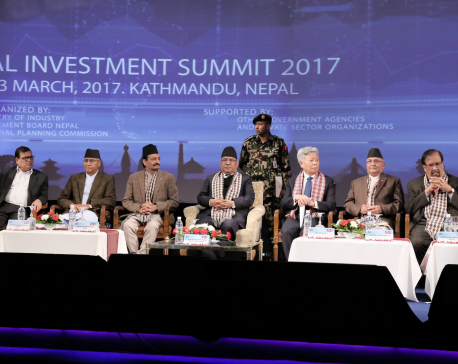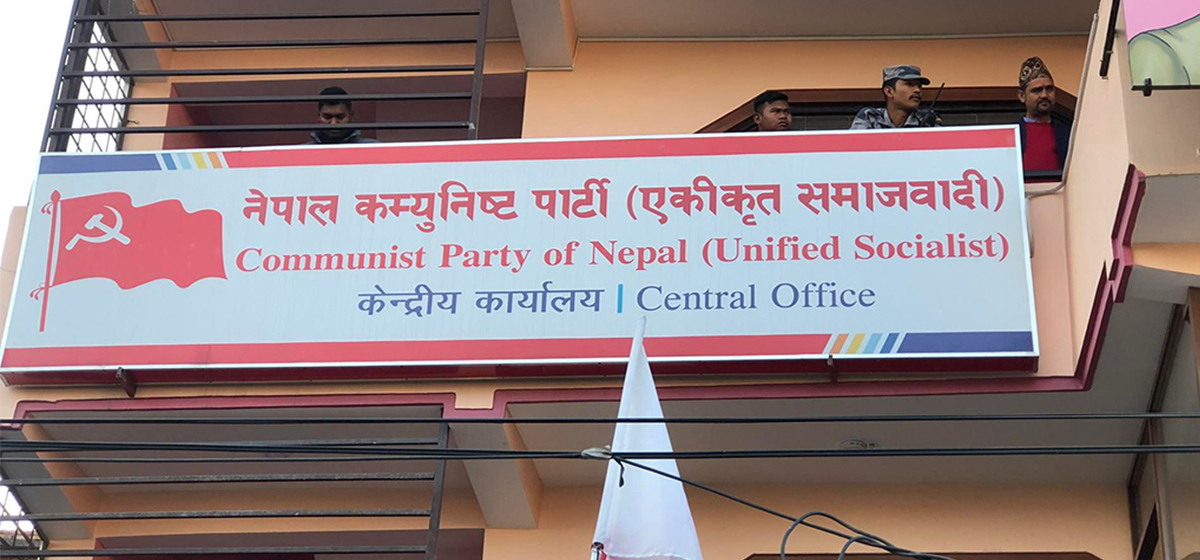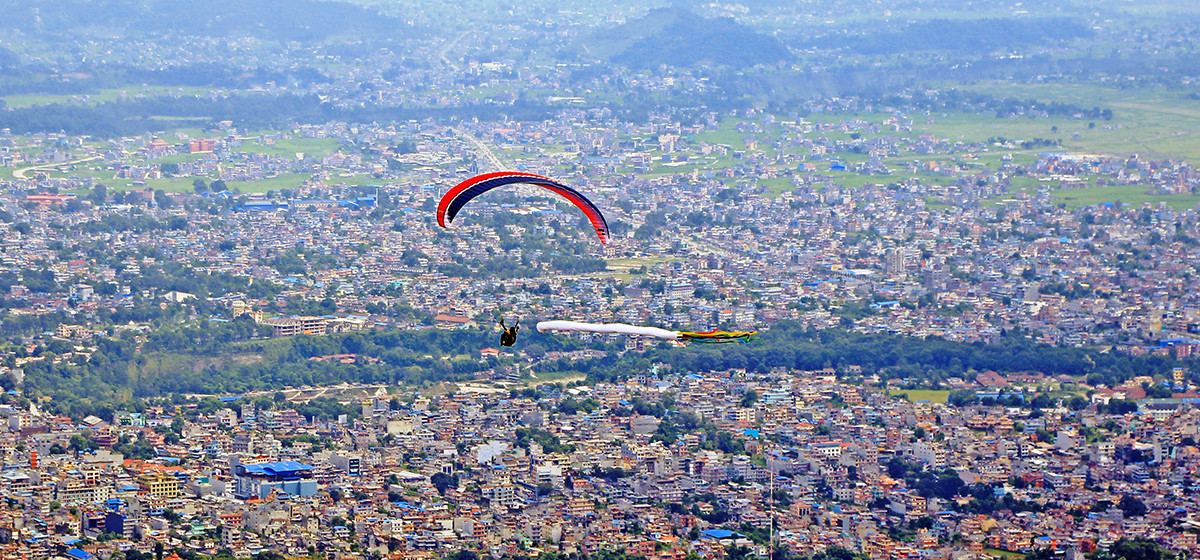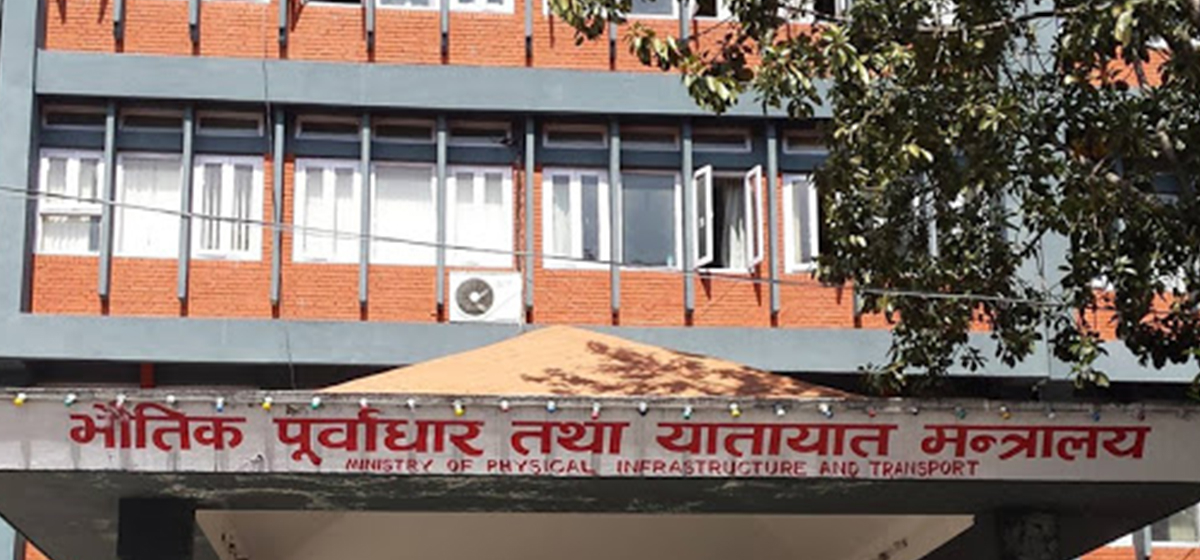
OR

Investment in rural electrification has brought significant improvements in the quality of life of people
Satya Lal Yadav, a 72-year-old resident of Baluwatol,Bariyarpatti Rural Municipality-3, reminisces about the day when electricity was introduced to his village only three years ago. Having lived a major part of his life without the luxury of electricity, he never thought that the day would come when his village would be powered by electricity. However, when it finally arrived, he stayed awake all night, basking in the euphoria of the momentous occasion. He reminisces, "After spending years using kerosene lamps for lighting, I couldn't sleep all night when electricity was first introduced. I just kept watching." Today, due to electrification efforts, nearly 1,000 households in Baluwatol have access to electricity.
Bhupan Narayan Yadav, a 75-year-old resident of Gargamma village,Bariyarpatti-1, had given up on ever seeing electricity in his village. During every election, he grew tired of hearing candidates make promises of bringing ‘light’ to the village, but then fail to deliver. "With our votes, the future of the leaders brightened, but the village remained dark," he lamented. However, Yadav's decades-long dream of living in a well-lit community was recently fulfilled by the local government. Despite promises of progress, subsequent leaders failed to follow through on their commitments. Even during the second Constituent Assembly election, the same slogan was raised, but the promises remained unfulfilled.
During the elections to the House of Representatives, provincial assemblies, and local governments, leaders recited a familiar slogan with a slight variation: "Ham gaammebijlilaibekchhorab" (I will bring electricity to the village by all means). Local residents attest that the chairman of the rural municipality, Santosh Shah, has kept his promise and brought light to the village, leading the citizens to re-elect him as chairman for a second term. In the absence of grid electricity, the villagers relied on locally installed solar panels for illumination. With the arrival of electricity, the village is now brilliantly lit.
Prior to the arrival of electricity in the village, inhabitants would travel a considerable distance to the remote village of Laharniya in order to access a local mill for grinding. Baijnath Yadav, a resident of the area, recalls how the arduous journey in a bullock cart would consume an entire day. However, with the advent of electricity, the construction of a mill within the village has greatly facilitated daily life. Not only have the settlements been illuminated, but also the farm barns have been outfitted with electricity. The infusion of this vital resource has motivated farmers to revitalize their lands, which had long been barren due to the lack of proper irrigation. As a result of increased access to irrigation, farmers have been inspired to cultivate once-barren lands, which have now begun to flourish with greenery.
Adding convenience
The faces of the rural farmers have been lit up with newfound hope, thanks to the recent arrival of electricity to their settlements. According to 82-year-old Raslal Yadav of Bariyarpatti, a southern rural area in Siraha, the farmers in this region had been struggling with a critical issue - a dependable irrigation system. Without a reliable means of irrigation, the prospect of abundant grain harvests had remained nothing but a distant dream. However, with the advent of electricity and the subsequent installation of irrigation facilities, a favorable atmosphere has begun to emerge, enabling the cultivation of diverse crops in the fields.
According to the locals, agriculture in the region thrived two decades ago when irrigation was easily accessible, enabling the cultivation of a diverse array of crops such as paddy, wheat, pulses, mustard, and chickpeas. However, as the irrigation facilities dwindled over time, farmers were forced to limit their cultivation to only paddy and wheat, in an effort to sustain their livelihoods. Eventually, due to the declining yields and economic viability, the cultivation of paddy and wheat also began to wane, resulting in a dire situation where food had to be procured from external sources.
PhakirSaday, a member of the Musahar community in Kachanari, Bariyarpatti Rural Municipality-1, reminisces about a time when the cultivation of multi-grains provided year-round employment opportunities. However, the current agricultural practices in the Terai region have drastically shrunk to only paddy crops, leaving him and many others unemployed for 10 months of the year. The shift from multi-crop to single crop cultivation has resulted in a significant decrease in the number of agricultural workers, causing many dependent farmers to lose their livelihood. Consequently, several male laborers are forced to seek work in the Gulf and India.
The local people often sarcastically remark that the government has invested more in constructing roads than in providing irrigation for the needs of rural farmers, as evidenced by the saying, "PetmeNahiyeAaSinghme Tel" (Investing more in construction without paying attention to hunger relief). As a result, farmers are hesitant to plant crops due to the inconvenience of irrigation and fertilizer application. Farmer Rajendra Yadav notes that the central government has not shown enough concern for the plight of rural farmers. However, since the election of a farmer's son as the village head (Mukhiya), agricultural electrification has been prioritized.
Despite the quantity of fertilizer remaining the same, farmers have been given concessions in irrigation. However, the lack of investment in irrigation and other agricultural infrastructure has severely impacted the lives of rural farmers in the region.
In light of the concerns raised by farmers, the rural municipality has embarked on a commendable initiative of agricultural electrification in several areas including Khoksi Janaki Nagar, Tenuwapatti, Jijhaul, Gargama, and Kachnarivillages, which together comprise all five wards. In cases where irrigation facilities are lacking, the scheme has provided irrigation facilities through agricultural electrification, resulting in the provision of irrigation facilities to around 700 bighas of fields. Once the electricity supply has reached the fields, farmers can irrigate their land using electric meters. This development has led to a surge in grain production and has opened up new opportunities for farmers to grow multiple crops.
Significant contribution of roads to people’s well-being
Bariyarpatti Rural Municipality comprises 22 former villages, which have now been consolidated into five wards. For many years, the residents of this region had been suffering due to the lack of access roads. Moving from one ward to another or even to the village executive office was a daunting task. During the winter season, the Dagar (foot trail) was dusty, while in the rainy season; it would turn muddy, thereby adding to the transportation woes of the people. Moreover, the Bariyarpatti Rural Municipality-1 KachnariMusaharisettlement would remain inaccessible during the rainy season.
However, the construction of a paved road has now brought a sense of relief and joy to the residents, particularly those living in the slum areas. TetriSaday, a resident of the slum, exclaimed, "I never imagined that a paved road would be constructed in our Dalit settlement." She further added that the construction of the road has made life easier for them as it has facilitated transportation and even made it possible for them to reach their farms.
Furthermore, the construction of agricultural roads has not only provided facilities to the farmers but has also made it mandatory for them to use equipment, as finding workers has become increasingly difficult. Dipendra Yadav, a local farmer, stated, "With the accessibility of the road, we can now bring equipment to our farms with ease."
Bariyarpatti Rural Municipality in the Madhesh Province is not the only region that has undergone transformation in recent years. The Sakhuwanankarakatti Rural Municipality in Siraha and the Maulapur Municipality in Rautahat have also experienced significant improvements. Thanks to the local governments’ arrival, previously unpaved roads have been paved, and electricity has been extended to farms. Schools and other infrastructure have also been upgraded, enhancing the quality of life for residents.
In particular, MaulapurMunicipality has implemented several measures to boost agriculture. The municipality has provided electricity to farmers' fields and even covers the cost of irrigation fees. They have constructed agricultural roads, dug boreholes for irrigation, and built organized agricultural markets, encouraging farmers to obtain crop insurance. Additionally, the municipality has established an agricultural and animal hospital and is currently constructing a cold storage facility to store produce.
These initiatives have been instrumental in promoting and supporting agriculture and animal husbandry in the region. Maulapur Municipality's efforts to improve infrastructure and facilitate the growth of the agricultural sector have had a positive impact on the lives of the people in the region, ensuring greater economic and social prosperity.
Bridging the development gap
The construction of a bridge over the Kalyandah River in SakhuwanankarakattiRural Municipality-1 (Latiyahi) has brought a great deal of satisfaction to the local population. The people in the southern villages, including Latiyahi, are thrilled about the prospect of being connected to the city, and a sense of contentment has spread throughout the region. The leader's catchy election slogan, which promised the construction of this bridge, has become a reality, bringing immense joy to the locals. Shri Prasad Yadav of Latiyahi expressed his gratitude, “The head of the village has kept his commitment and has shattered the notion that leaders disappear after collecting votes, leaving their promises unfulfilled.” The transformational impact of this bridge on the community is evident, and the villagers now look forward to a more connected future.
Umashankar Yadav, a resident of the local community, previously held the notion that political leaders only make lofty promises during election campaigns, without any intentions of fulfilling them. However, his perspective has undergone a shift as he expressed his newfound belief that not all leaders show dreams that do not turn into reality. He conveyed his joy over the appointment of a competent leader (Mukhiya) in their municipality who is determined to bring about real change, devoid of deceitful pledges. “Our dream was to see a bridge built over this river,” Yadav further added, "After the construction of the bridge, the village has been connected to the city. The village is on the road to prosperity.”
Thus, the past two decades in the Federal Democratic Republic have been marked by a strong push for movement and rebellion towards establishing a functional federal system. It is heartening to note that we have now progressed to the stage of actual implementation. As we move forward, it is important for the local level or the province to prioritize their efforts towards improving the lives of their citizens. Rather than getting involved in other issues, the focus should be on spreading light and prosperity in every corner of the country. This can be achieved by empowering rural communities and ensuring that they feel the presence of the government in their villages. By working towards this goal, we can create a brighter future for our people, and build a strong, vibrant, and inclusive society.
You May Like This

Nepal Investment Summit 2017 – An opportunity for attracting more foreign investment
KATHMANDU, March 1: The Nepal Investment Summit that opens in the capital on March 2 is expected to be a... Read More...

New bill to encourage foreign investment
KATHMANDU, June 4: In a good move that is expected to promote foreign investment, investments worth up to Rs 5... Read More...

Interaction on trade and investment in Pakistan
KATHMANDU, Nov 29: The Nepali Embassy in Pakistan on Monday organized an interaction programme in Rawalpindi of Pakistan. ... Read More...
Just In
- CPN (Unified Socialist) to hold its Central Committee meeting on May 10-11
- Over 16,000 paragliding flights conducted in one year in Pokhara
- MoPIT prepares draft of National Road Safety Act, proposes rescue within an hour of an accident
- Light rainfall likely in hilly areas of Koshi, Bagmati, Gandaki and Karnali provinces
- Customs revenue collection surpasses target at Tatopani border, Falls behind at Rasuwagadhi border in Q3
- Rain shocks: On the monsoon in 2024
- Govt receives 1,658 proposals for startup loans; Minimum of 50 points required for eligibility
- Unified Socialist leader Sodari appointed Sudurpaschim CM



















Leave A Comment